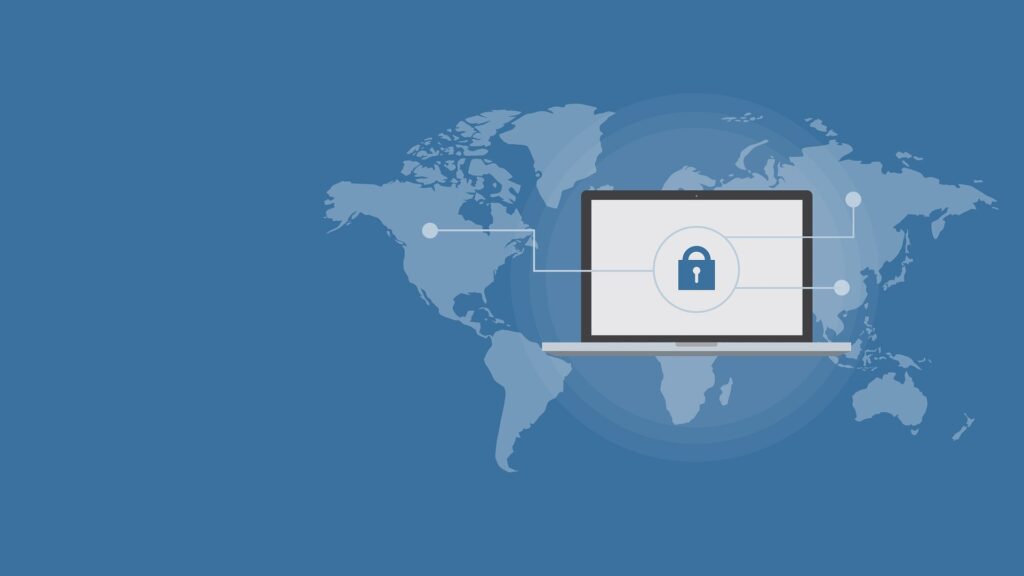Cyber Security- refers to the practice of protecting computer systems, networks, and electronic devices from attacks, theft, loss, or unauthorized access in the digital world. It includes a range of technologies, processes, and practices designed to protect sensitive information and prevent cybercrime. Cybersecurity is essential for individuals, businesses, and governments. Because they all rely heavily on technology and digital information to function effectively. Cybersecurity measures include firewalls, antivirus software, encryption, multi-factor authentication, and regular system updates. It is a rapidly evolving field due to the increasing sophistication and frequency of cyber attacks.

Types of CyberSecurity
Network Security: This type of security focuses on protecting computer networks from unauthorized access, modification, or destruction.
Application Security: This type of security focuses on protecting applications or software from threats such as viruses, malware, and other malicious attacks.
Information Security: This type of security focuses on protecting sensitive information such as personal data, financial information, and intellectual property from unauthorized access and theft.
Cloud security: This type of security focuses on protecting cloud-based infrastructure and data from cyber threats.
Mobile Security
This type of security focuses on protecting mobile devices such as smartphones and tablets from cyber threats such as malware and phishing attacks.
Endpoint Security: This type of security focuses on protecting endpoints such as laptops, desktops, and mobile devices from threats and attacks.
Physical security: This type of security focuses on protecting physical assets such as servers, data centers, and other critical infrastructure from theft, loss, or unauthorized access.
Behavioral Security: This type of security focuses on monitoring and analyzing user behavior to identify potential security risks and threats.
Importance of Cyber Security
Protecting sensitive information: Cybersecurity helps protect sensitive information such as personal data, financial information and intellectual property from theft or misuse. This information is often stored on digital devices or transmitted over networks, making it vulnerable to cyber-attacks.
Maintaining trust: Cybersecurity is critical to maintaining trust between organizations and their customers, especially when it comes to online transactions. Customers expect their personal and financial information to be protected, and failure to do so can lead to a loss of trust and a damaged reputation.
Compliance with regulations: Many industries have regulations and standards that require organizations to implement cybersecurity measures to protect sensitive data.
Avoiding financial losses: Cybersecurity threats such as ransomware, fraud, and identity theft can cause significant financial losses to businesses and individuals. Investing in cybersecurity can prevent these risks by reducing the risk of successful attacks.
Protecting critical infrastructure: Cyber security is essential in protecting critical infrastructure such as power grids, transportation systems, and communication networks. A successful cyber-attack on these systems can lead to significant disruptions and loss of life.
Cyber security is critical to protecting sensitive information, maintaining trust, complying with regulations, preventing financial losses, and protecting critical infrastructure. It is imperative that individuals, businesses, and governments invest in cybersecurity measures to ensure a safe and secure digital environment.
Cyber Security Examples
Firewalls: Firewalls are security systems that prevent unauthorized access to a computer network. They work by monitoring and filtering incoming and outgoing network traffic based on predetermined security rules.
Encryption: Encryption is the process of converting plain text into code that cannot be read by anyone who does not have the correct decryption key. Encryption is commonly used to protect sensitive data such as credit card numbers and passwords.
Multi-factor authentication: Multi-factor authentication (MFA) is a security technology that requires users to provide two or more forms of identification before being granted access to a system or application. This may include a password and a fingerprint or a password and a security token.
Anti-virus software
Anti-virus software is designed to detect and remove harmful software or malware from a computer system. This software scans files and programs for signs of infection and can also protect against future infections by preventing known malware from downloading or running.
Security Patches: Security patches are updates to software or operating systems that fix vulnerabilities and prevent cyber attacks. These patches are usually released in response to new security threats, and it’s important to install them as soon as possible to ensure the security of your system.
Penetration Testing: Penetration testing is the process of assessing the security of a computer system or network by simulating a cyber attack. This allows organizations to identify weaknesses and vulnerabilities in their security systems and take steps to address them before they are exploited by real attackers.
Security Awareness Training: This includes educating employees on the importance of security, how to spot phishing attacks, and how to avoid cyber security risks.
Incident Response Plans: An incident response plan is a documented procedure that outlines the actions to be taken in the event of a security breach or cyber attack. It is important to have the plan to minimize damage, contain a breach, and restore operations as quickly as possible.